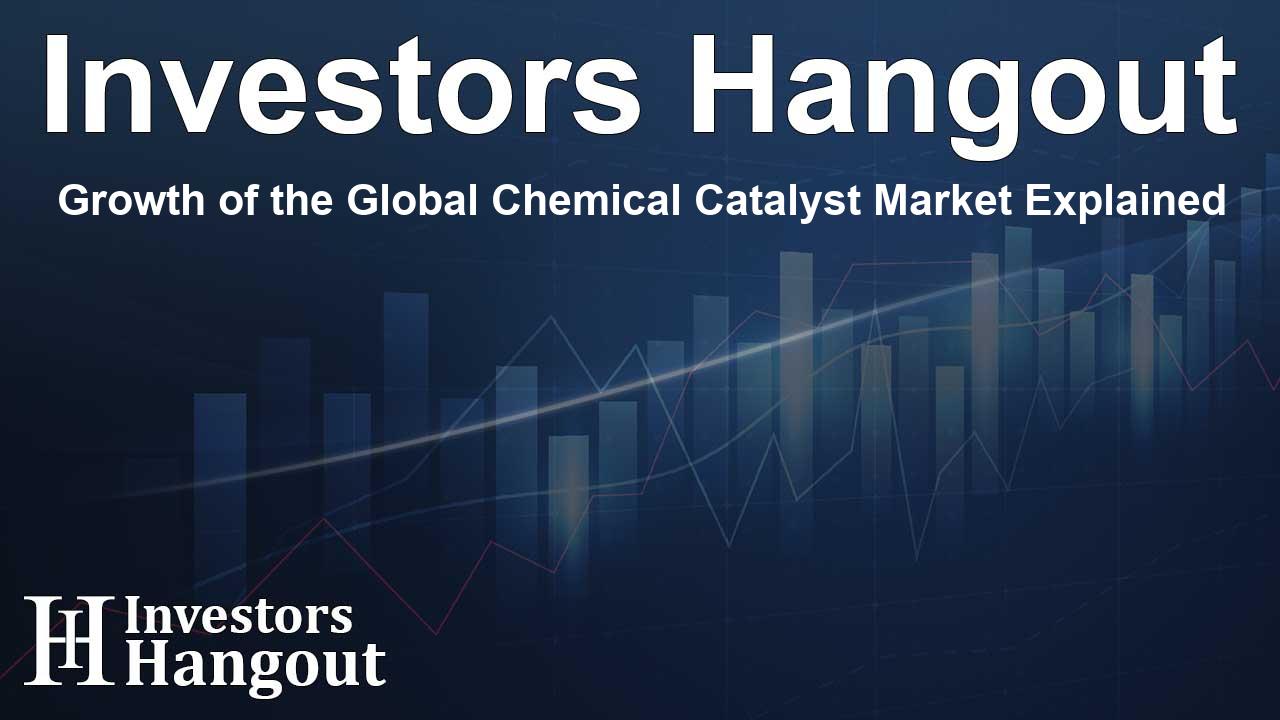Growth of the Global Chemical Catalyst Market Explained

Understanding the Global Chemical Catalyst Market
The Global Chemical Catalyst Market is poised for substantial growth, expanding from USD 40.52 Billion in the present year to an impressive USD 64.10 Billion by the end of the projected period. This growth represents a Compound Annual Growth Rate (CAGR) of 4.69%. What does this really mean for industries reliant on chemical production? Let’s break it down.
What Are Chemical Catalysts?
A catalyst is a substance that accelerates a chemical reaction without being consumed in the process. Reactants interact and transform into products through various chemical changes. Catalysts are essential in the industrial manufacturing of countless products including chemicals, polymers, pharmaceuticals, biofuels, and food items. They facilitate crucial processes, such as petroleum refinement, ammonia synthesis, and emissions regulation in vehicles, making their role invaluable. However, as the market grows, the rising costs of raw materials may pose challenges to development.
Key Segments in the Chemical Catalyst Market
Type of Catalysts
The market is primarily segmented into two types: heterogeneous and homogeneous catalysts. Notably, the heterogeneous segment currently commands the largest market share. These catalysts are preferred in industrial applications because they are easier to separate from products and can be reused multiple times, leading to efficiency and cost-effectiveness. This segment's growth is largely driven by the petrochemical industry's expansion and increasing demand for environmentally-friendly chemical processes.
Material Utilization
Catalysts can be made from various materials, categorized mainly into metal and metal oxides, zeolites, and chemical compounds. Metal catalysts, particularly those based on nickel, palladium, and platinum, are seeing the largest market share. Their application in hydrogenation, oxidation, and hydrogen generation processes emphasizes their importance in fields like pharmaceuticals and petroleum. Furthermore, metal oxides are crucial for decarbonization efforts, paving the way for innovative catalytic strategies aimed at improving sustainability.
Form of Chemical Catalysts
Dominance of Powdered Catalysts
The powdered form of catalysts is currently dominating the market, utilized widely across petrochemical refining and environmental applications. Their large surface area enhances efficacy, appealing to manufacturers seeking effective solutions for chemical synthesis.
Regional Insights on Market Growth
The Asia-Pacific region is set to lead in market share, driven by significant investments and a focus on sustainable product development. Companies like BASF SE have enhanced their facilities to produce high-performance catalysts, catering to demand in this rapidly growing market. In contrast, Europe is expected to witness the fastest growth, largely due to initiatives aimed at improving air quality and utilizing less energy intensive catalysts.
Competitive Landscape
The competitive landscape showcases key players in the global chemical catalyst market, analyzing their product offerings, strategies, and market share. Companies like W. R. Grace & Co, Evonik Industries AG, and BASF SE are innovating continually, with advancements in catalytic technologies and strategic partnerships driving market dynamics.
Recent Developments in Catalyst Technology
In April 2024, Clariant introduced the propane dehydrogenation catalyst, CATOFIN 312, which promises enhanced selectivity and a 20% increase in lifespan. This innovation speaks to the industry's ongoing commitment towards efficiency and sustainability.
Frequently Asked Questions
What drives the growth of the chemical catalyst market?
The growth is primarily driven by increasing demand for efficient and sustainable chemical processes across various industries, including petrochemicals and pharmaceuticals.
How do chemical catalysts work?
Catalysts accelerate chemical reactions without being consumed, allowing reactants to convert into products more efficiently and quickly.
What are the major types of catalysts?
The major types are heterogeneous and homogeneous catalysts, with heterogeneous catalysts leading in market share due to their versatility and reusability.
Which region is expected to lead in the chemical catalyst market?
The Asia-Pacific region is expected to lead in market share, followed closely by Europe, which is experiencing rapid growth driven by regulatory dynamics and quality improvements.
What recent innovations are happening in catalyst technology?
Recent developments include new catalysts with enhanced performance metrics, such as Clariant's CATOFIN 312, aimed at improving efficiency and lifespan in catalysis.
About Investors Hangout
Investors Hangout is a leading online stock forum for financial discussion and learning, offering a wide range of free tools and resources. It draws in traders of all levels, who exchange market knowledge, investigate trading tactics, and keep an eye on industry developments in real time. Featuring financial articles, stock message boards, quotes, charts, company profiles, and live news updates. Through cooperative learning and a wealth of informational resources, it helps users from novices creating their first portfolios to experts honing their techniques. Join Investors Hangout today: https://investorshangout.com/
Disclaimer: The content of this article is solely for general informational purposes only; it does not represent legal, financial, or investment advice. Investors Hangout does not offer financial advice; the author is not a licensed financial advisor. Consult a qualified advisor before making any financial or investment decisions based on this article. The author's interpretation of publicly available data shapes the opinions presented here; as a result, they should not be taken as advice to purchase, sell, or hold any securities mentioned or any other investments. The author does not guarantee the accuracy, completeness, or timeliness of any material, providing it "as is." Information and market conditions may change; past performance is not indicative of future outcomes. If any of the material offered here is inaccurate, please contact us for corrections.